PHY 103: The Physics of Music
Fall 2016
Bausch and Lomb 407: Tu Th 9:40 - 10:55
Lab: M 2:00 - 4:40
PHY 403 is an exploration of music and acoustics using demonstrations and laboratory experiments. The class meets once per week for lectures. Students apply the lecture material during weekly sessions in the music lab (B&L 403), building and testing their own musical instruments. At the end of the semester, the class performs a short concert (or individual demonstrations) using instruments of their own design.
Location and Office Hours
| Instructor | TI | |
| Segev BenZvi | Luke Okerlund | |
| B&L 405 | B&L 403 | |
| Th 9:30 - 11:00 | M 2:00 - 4:40 | |
Textbooks
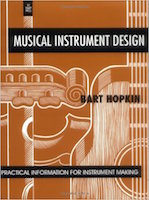
The course textbook is Musical Instrument Design by Bart Hopkin (ISBN-10: 1884365086), an excellent and inexpensive book about the physical principles behind the different families of instruments. The book also describes how to make music using highly creative and unusual instrument designs.
The following books are also on reserve at POA:
- An Introduction to the Psychology of Hearing by Brian Moore.
- Music, Cognition, and Computerized Sound: An Introduction to Psychoacoustics by Perry Cook.
- Measured Tones: The Interplay of Physics and Music by Ian Johnston.
- Fundamentals of Musical Acoustics by Arthur Benade.
- The Physics of Sound by Richard Berg and David Stork.
- Physics and the Sound of Music by John Rigden.
- The Physics of Musical Instruments by Neville Fletcher and Thomas Rossing.
- Why You Hear What You Hear by Eric Helling.
Syllabus
- Propagation of sound waves
- Normal modes and resonances
- Harmonic analysis
- Timbre
- Musical scales and temperament
- Loudness (measurement and perception)
- Psychoacoustics and audio illusions
- Room acoustics
Grading
| Weekly Lab Reports | 60% |
| Class Participation | 10% |
| Midterm | 10% |
| Final Project | 20% |
You are required to complete at least 8 out of 10 lab reports to get full credit during the fall semester. Due to the difficulty of setting up different equipment for different experiments, here are no make-up labs allowed -- hence the 8 out of 10 policy. Note that if you miss a lab, you will need to provide a valid excuse (religious holiday, personal emergency, etc.).
The midterm will be an in-class exam meant to test your conceptual understanding of the topics you learn about in the course.
For the final you will design and build your own instrument in the lab during the last month of the semester. We have tentatively scheduled a short (10-15 minute) concert on December 9 where you can show off your instrument. To get full credit you will need to be on the concert program. Students who cannot attend the concert may get credit by presenting their final projects in class.
Software
In the lab we will use the commercial software Adobe Audition to perform frequency analyses of your recordings and produce awesome spectrograms. However, if you wish to explore on your own there are several excellent open-source (and free) software packages that you can try out:
- Audacity:
An open-source alternative to Audition with most of the same features. - Praat:
An excellent software package for formant analysis of the human voice. Very fun to play with... - Overtone Analyzer:
A commercial frequency analyzer specifically designed for tone analysis and voice training for singers and musicians. Very nice but not free, unfortunately.
Lecture Notes
| 1 | Sep. 6 | Introduction to Waves |
| Reading: Hopkin Ch. 2, Berg and Stork Ch. 2, Heller Ch. 2 | ||
| 2 | Sep. 8 | Standing Waves and Harmonics |
| Reading: Hopkin Ch. 1, Berg and Stork Ch. 3 | ||
| 3 | Sep. 13 | Fourier Analysis and Sampling |
| Reading: Hopkin Ch. 1, Berg and Stork Ch. 4 | ||
| 4 | Sep. 20 | Standing Waves in an Air Column |
| Reading: Hopkin Ch. 6 | ||
| 5 | Oct. 4 | Scales and Temperament |
| Reading: Hopkin Ch. 3, Berg and Stork Ch. 9 | ||
| 6 | Oct. 18 | Impedance |
| Reading: Hopkin Ch. 1, Heller Ch. 1. | ||
| 7 | Oct. 25 | Loudness and Amplification |
| Reading: Heller Ch. 7, Fletcher and Rossing Ch. 9, 12. | ||
| 8 | Nov. 1 | Bars and Bells |
| Reading: Hopkin Ch. 3, Fletcher and Rossing Ch. 2 (advanced). | ||
| 9 | Nov. 15 | Drums |
| Reading: Hopkin Ch. 7, Fletcher and Rossing Ch. 3 (advanced). | ||
| 10 | Nov. 22 | Voice |
| Reading: Heller Ch. 17 | ||
| 11 | Nov. 29 | Room Acoustics |
| Reading: Berg and Stork Ch. 8. | ||
| 12 | Dec. 1 | Auditory Illusions |
| Reading: Cook. |
Labs
| 1 | Sep. 12 | Measurements of Frequency |
| 2 | Sep. 19 | Spectral Analysis of Sliding Whistles |
| 3 | Sep. 26 | Making a Fretted Monochord Tuned in Equal Temperament |
| 4 | Oct. 3 | Amplification with a Piezoelectric Contact Pickup |
| 5 | Oct. 17 | Building an Electroacoustic Transducer (Speaker) |
| 6 | Oct. 24 | Copper Pipe Xylophone and Gong |
| 7 | Oct. 31 | Near Field Radiation of Sound |
| 8 | Nov. 7 | Resonant Tones in an Air Column: The Didgeridoo |
| 9 | Nov. 14 | Constructing a PVC Flute |
| 10 | Nov. 21 | Room Acoustics |
Final Projects
Final projects from Fall 2016, in order of presentation:
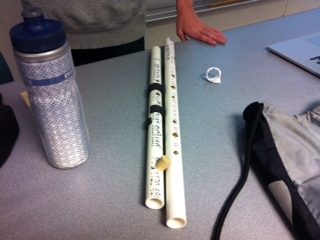
Paul Sinclair: |

Aaron Santiago: |
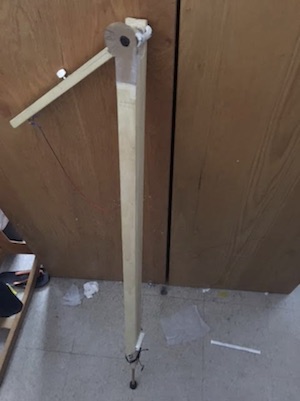
Ethan Savitch: |
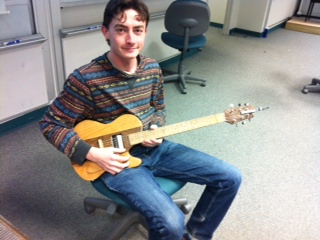
Scott Trufan: |
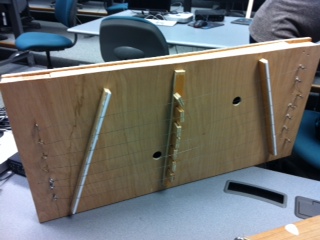
Theo Wahawisan: |

Melissa Proven: |
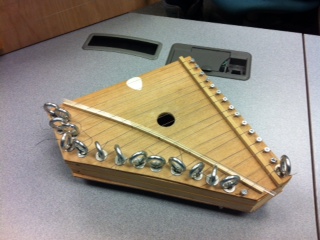
Haley Weaver: |
Credit and Usage
Anyone who comes across this material and wishes to use it for their own courses is free to do so without requesting my permission. However, please cite S. BenZvi, Dept. of Physics and Astronomy, University of Rochester, 2016.
